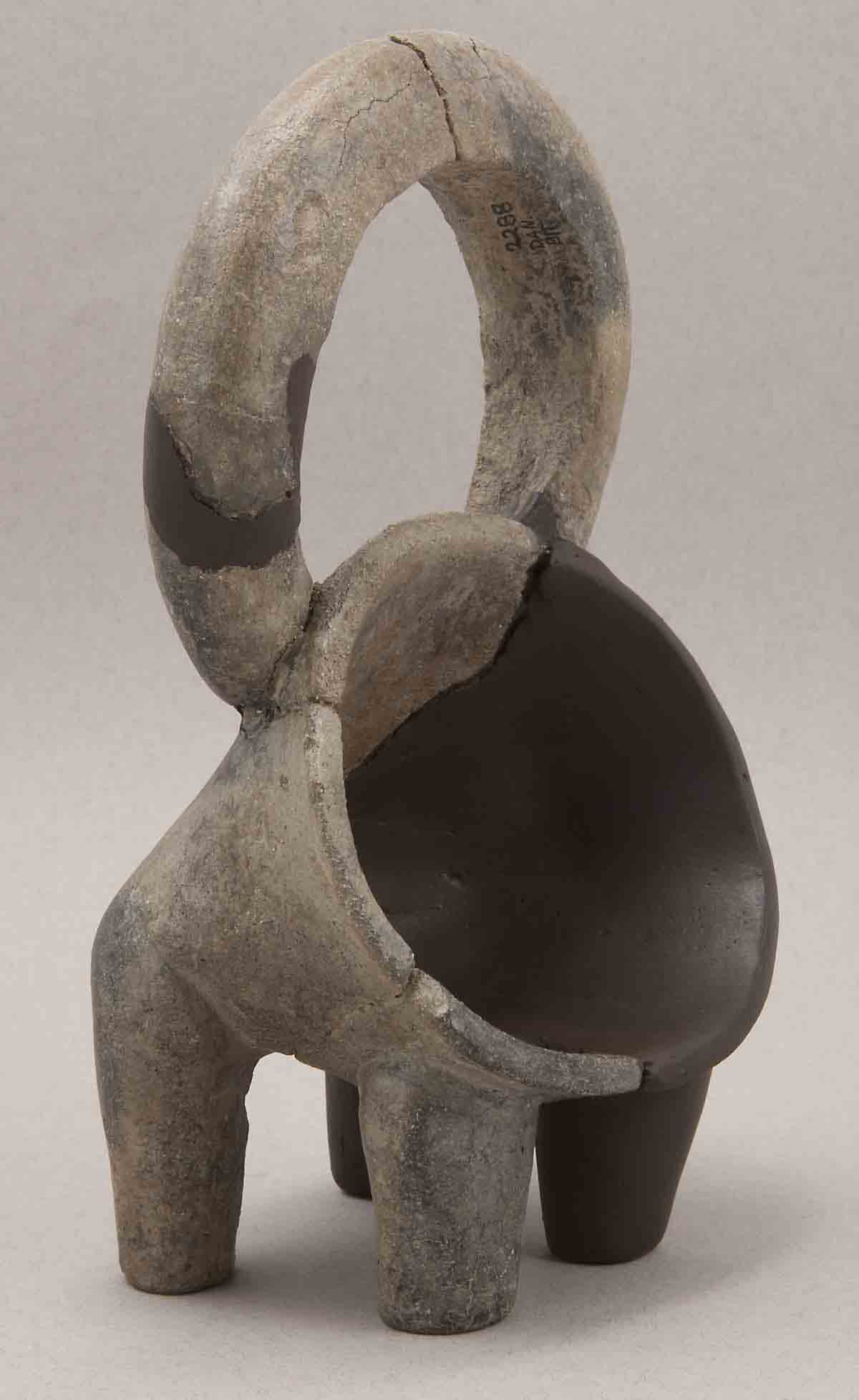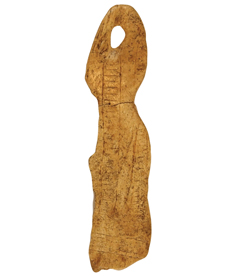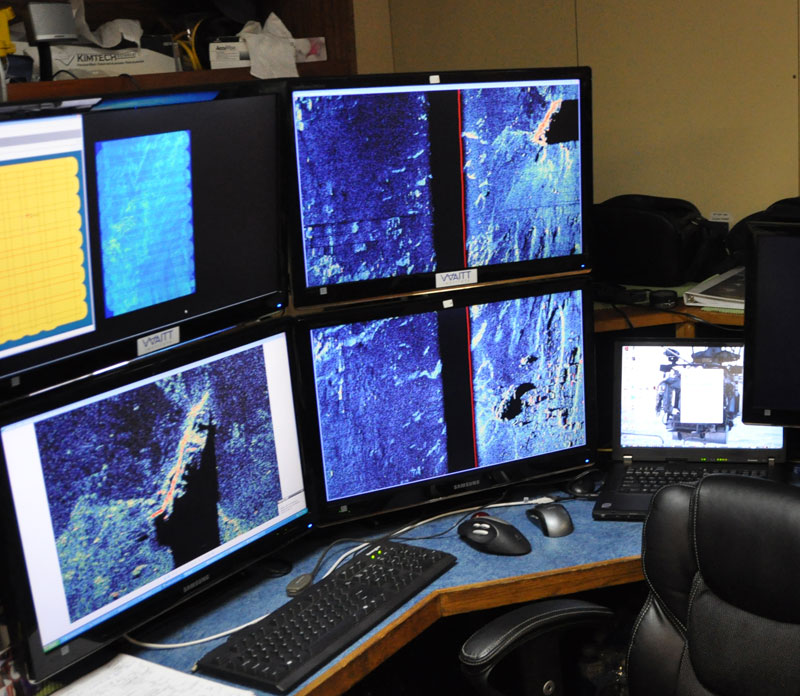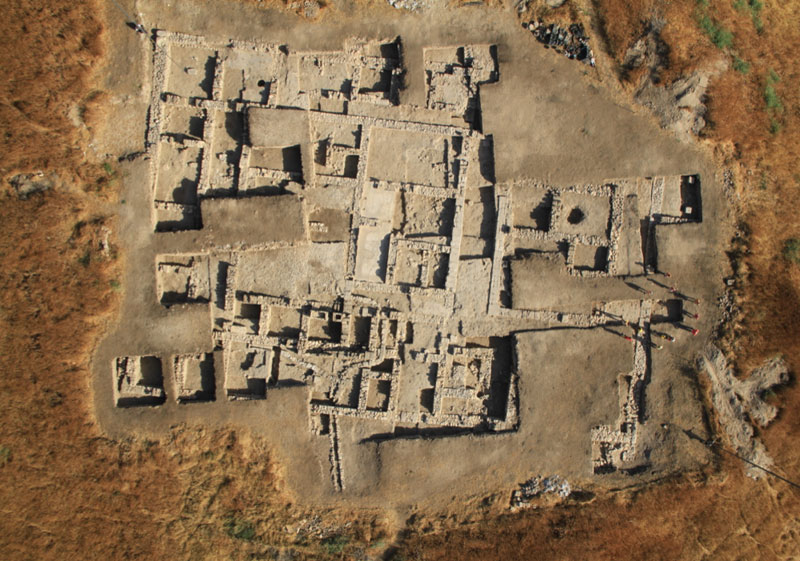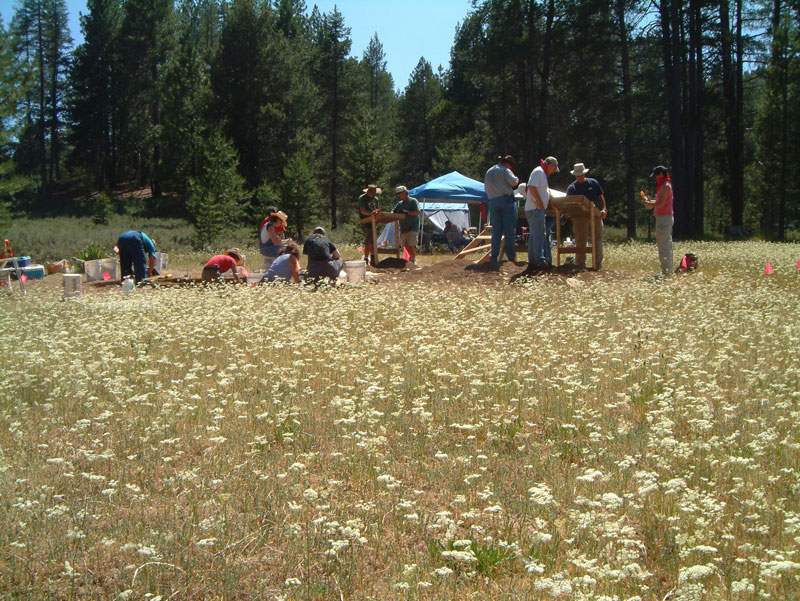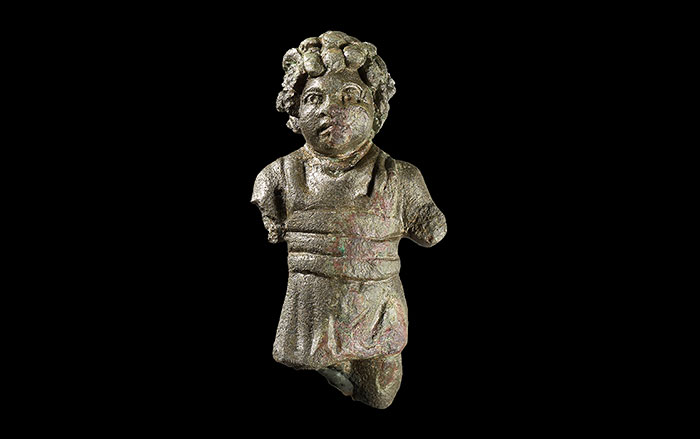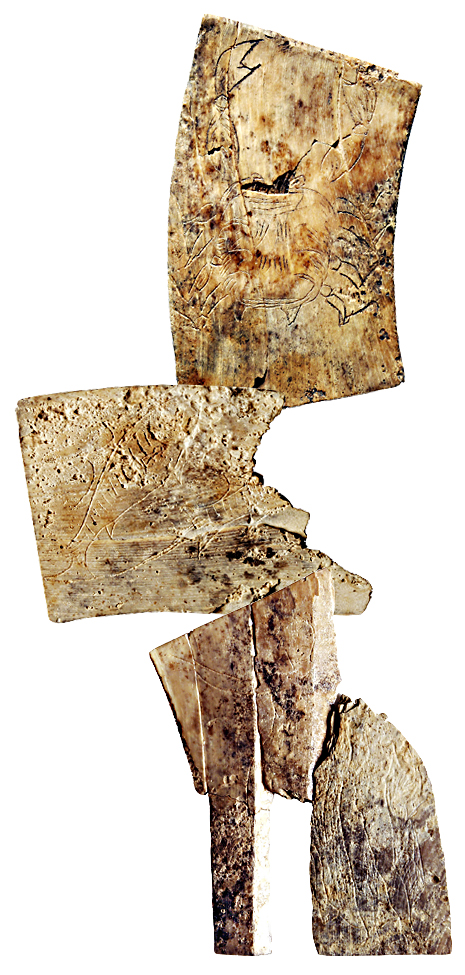
After three years of cleaning and reassembling ceramic drinking vessels from a 2,000-year-old Illyrian-Hellenistic sanctuary deep in a Croatian cave, archaeologist Stašo Forenbaher turned his attention to the 30 ivory fragments he also found there. "When I started putting the fragments together," he says, "I soon realized that I was looking at signs of the zodiac."
Forenbaher consulted with experts in ancient Greek astrology, who were stunned. When arranged in a circle, the ivory fragments compose what may be the world's oldest astrologer's board. Although some of the inscribed signs (highlighted at right) are too fragmentary to name, the Cancer, Pisces, and Gemini segments (top to bottom) are clearly identifiable. The tiles would have originally been fixed to a flat surface. The fragments were found with the drinking vessels in front of a large stalagmite, which was clearly a focus of worship. It is impossible to tell if the board was an offering itself, or if it had been used there to provide horoscopes to visitors.



